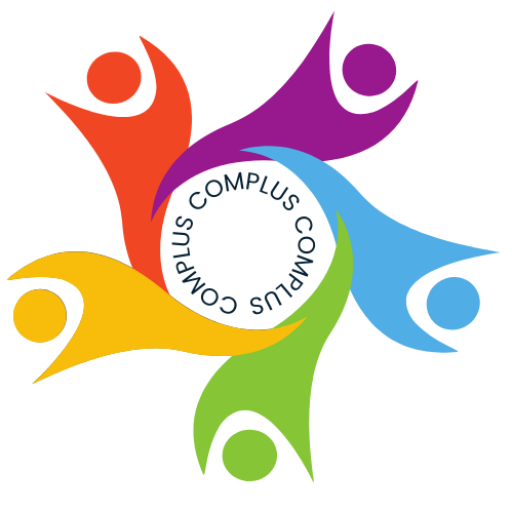Authors: Pushpa V, Sweta Dash, Shayari Nag, Jith JR
As a research team that had just started working with Mahila Aarogya Samitis (MAS) to strengthen community participation in the urban health system in Bengaluru, we realised the pertinent need for better relationships between the community members and the frontline health workers like the Accredited Social Health Activist (ASHA). On one hand, our MAS members expressed the lack of awareness about the roles and responsibilities of ASHAs and said they did not have access to proper information channels to understand and claim entitlements with their support. On the other hand, the ASHA workers shared how they are overworked and overburdened with increasing workloads, and said they felt demotivated because the community members were not cooperative enough with them.
On a hot summer afternoon in June 2024, with our partner organisation in Bengaluru, Sangama, we organised a meeting with 13 ASHAs. This meeting was intended to allow open and honest dialogues between the MAS members and the ASHAs. In the process, we realised, all over again, that the ASHAs form the backbone of community health but are not even recognised as ‘workers” in the eyes of the State.
In 2005, community health workers employed by the Ministry of Health and Family Welfare (MoHFW) of India were recognised as the ASHAs with the idea that they would act as the bridge between the marginalised population and the health care system. One ASHA is expected to cater to every 1000 and 2000 people in rural and urban areas, respectively. In Karnataka, ASHAs were recruited and trained under the health department from 2008-09. According to the National Health Mission, Karnataka, over 40,000 ASHAs work in the state.
According to the National Health Mission, the role of the ASHAs includes, but is not limited to, “promoting universal immunization, referral and escort services for Reproductive & Child Health (RCH) and other healthcare programmes, and construction of household toilets”; “create awareness on health and its social determinants and mobilise the community towards local health planning and increased utilisation and accountability of the existing health services”; promote good health practices and provide a minimum package of curative care; “provide information to the community on determinants of health such as nutrition, basic sanitation & hygienic practices, healthy living and working conditions, information on existing health services and the need for timely utilisation of health & family welfare services”; “counsel women on birth preparedness, importance of safe delivery, breast-feeding and complementary feeding, immunisation, contraception and prevention of common infections including Reproductive Tract Infection/Sexually Transmitted Infections (RTIs/STIs) and care of the young child.”
Importantly, the ASHAs are selected from the same marginalised communities that they serve. An ASHA emerges from these disadvantaged areas as a woman who not only serves her family but also raises her voice on behalf of the community.
ASHAs are the first point of contact for healthcare for the marginalised communities in rural and urban areas. The medical personnel from the Primary Health Centers (PHC), for instance, rarely leave their workplaces to visit the communities to raise health awareness and provide health services such as immunisation drives. It is the ASHAs who eventually handle the cumbersome task of keeping stock of identification of mothers and children, tracking logistics, bringing children and women to the PHC, fetching the necessary vaccines, and ensuring online and manual data entry.
In our work in Bengaluru, we realised that the responsibility of the MAS is also on the ASHAs. They are expected to form the groups for the women to have a space to discuss their problems, find solutions, and raise their voices. In doing so, these ASHAs facilitate a safe space for the women where the topics that were once considered ‘private’ and ‘individual’ get to be heard and discussed collectively. Thereafter, the ASHAs convey the discussions to the PHC as per their reporting templates, and follow up with medical staff to escalate matters to other appropriate levels for resolution as deemed fit.
None of this is an easy task, especially considering the paltry honorarium of Rs 5000 per month. Many of these ASHAs are the primary or at least the most significant breadwinner of their households. And, given the cost of living in urban settings, it is difficult to sustain with this amount.
The ASHAs have seen a dramatic rise in workload since the National Rural Health Mission’s launch in 2005. Originally expected to work just two hours a day, ASHAs now handle extensive responsibilities, from maternal and child health services to vaccination drives and data collection, to learning palliative care, reporting domestic violence cases, providing mental health support, and more. Despite their essential role, they are overworked and often expected to function without rest.
The relentless nature of their work takes a severe toll. Many ASHAs report exhaustion, inadequate food intake, and chronic sleep deprivation. A survey conducted during the COVID-19 pandemic in Phanda block of Bhopal found 13% of ASHAs go without food during work hours, while nearly half reported insufficient sleep and rest. This overexertion not only harms their health but also diminishes the quality of healthcare they provide.
Systemic challenges compound their burden. ASHAs frequently face caste- and gender-based discrimination, along with mistreatment from superiors. Some are denied entry into households due to caste bias, while others endure derogatory remarks when interacting with the male community members. Some of them reported that they find it challenging to raise their voice or advocate for better implementation of rules and policies because they fear they will be met with the threat of termination. These experiences contribute to mental stress and an unsupportive work environment.
When asked why they chose this profession, many of them answered that it was due to poverty. Their husbands often did not work, leaving them to take responsibility for the household expenses and care work. They asked, “If the government ignored those who served society, how were they supposed to survive?”
They further added that they felt the ASHAs are treated as if they are machines — expected to function without rest, yet without even the basic rights and protections granted to formal healthcare workers.
It is essential to question why the task of ensuring improved community health was assigned to women and not men. What makes the State and the society expect this herculean task of community health and wellbeing to be borne by women for a paltry honorarium, while also not recognising them as ‘workers.’
Feminist scholarship defines community work as a “third burden” that women bear in addition to their reproductive and productive labour. This reflects a broader pattern in which the state systematically extracts women’s unpaid or underpaid labour to implement its policies. Scholars describe this phenomenon as “care extractivism”—the global commodification of social reproduction, where female healthcare workers sustain the health system without recognition or fair compensation for their contributions.


